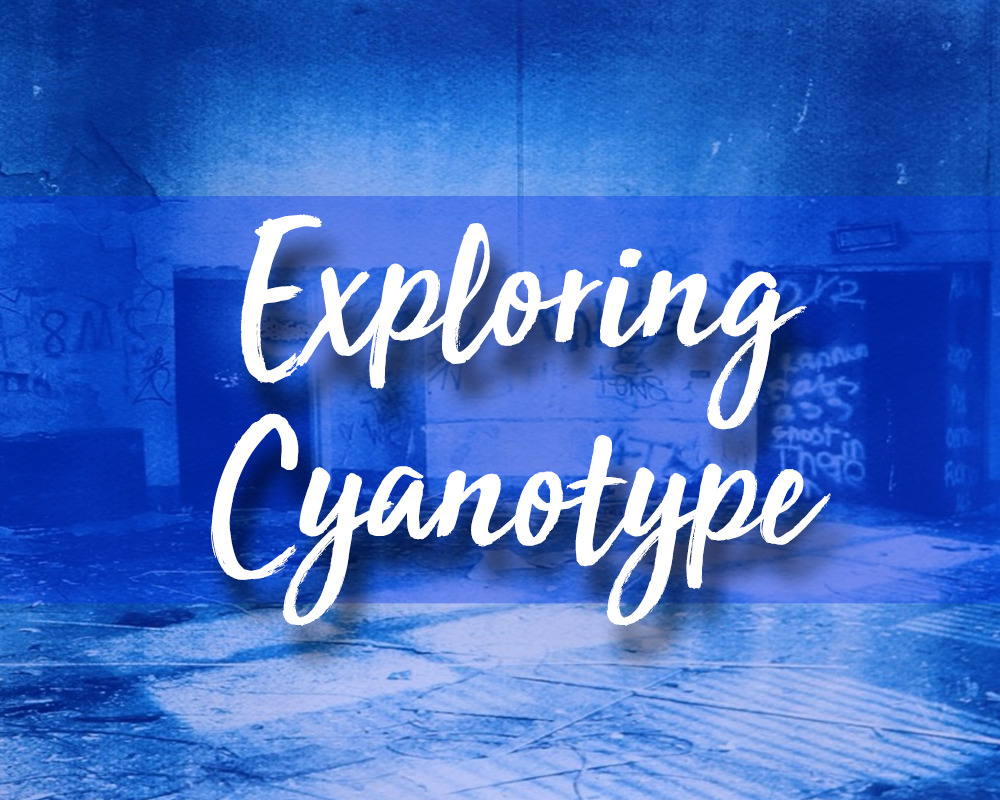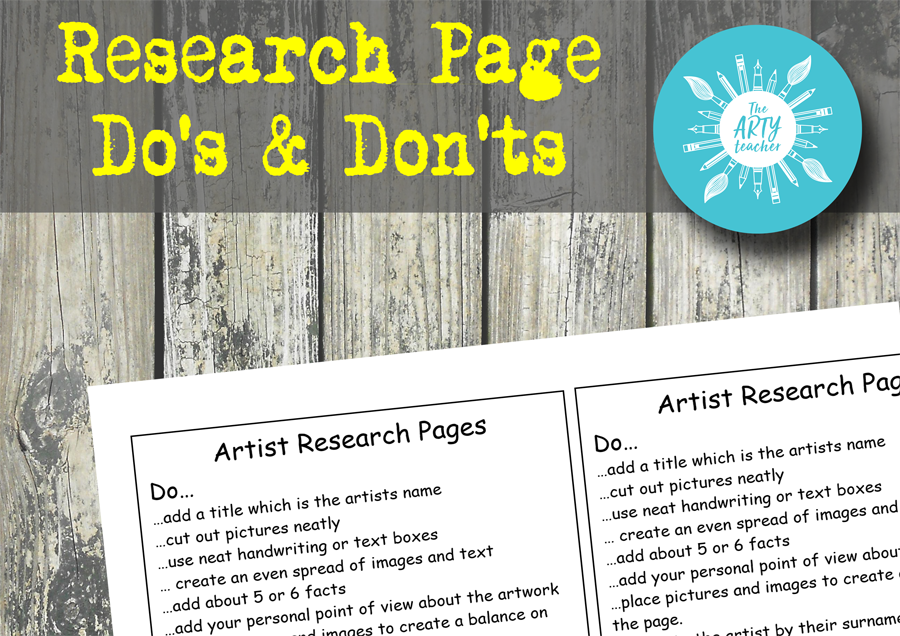
Exploring Cyanotype
What is Cyanotype?
Cyanotype is a photographic printing process that produces a cyan-blue print. The basic premise involves coating a surface with a 1:1 solution of Potassium Ferricyanide and Ammonium Ferric (III) Citrate. This surface must dry in a dark place. Prints can be made using negatives or placing everyday objects on the surface to block the light. A positive image can be produced by exposing it to a source of ultraviolet light such as sunlight.
Cyanotype is a camera-less technique that involves many of the traditional chemical practices of photography, without the need for a darkroom space. You can mix this yourself with the help of your science department, or purchase ready-made kits.
You can get the kit above on Amazon.com and Amazon.co.uk #ad. It’s a great starter kit if you want to experiment yourself before you try this with a class.
It is therefore a gateway process to chemical photography, but also offers an ability to create interdisciplinary forms of artwork that can easily extend students’ ideas.
Most people will be aware of architectural ‘blueprints’, which used the cyanotype process to reproduce a technical drawing or engineering design – a very early form of photocopying. The process was originally discovered in 1842 by Sir John Herschel, an English scientist who became interested in the process of iron salts. The botanist Anna Atkins is well-known for recording different plant specimens through creating photograms. With modern technologies, cyanotype is able to offer the possibility of using digitally manipulated and printed negatives, in order to create contact prints of items, drawings and photographic images.
Through delivering workshops to staff and students, it is clear that the technique forms a hybrid between traditional and contemporary photographic practices. It allows Art & Design students to apply their learning through their own mistakes; exploring the range of outcomes that the process can help to produce through both accidental and deliberate actions.
Here’s how you can further explore cyanotype with your Art and Photography students.
The basic process is straightforward and quick
Where light is blocked, chemicals remain unreacted and wash away with water. Here, the student coated a large piece of fabric with the chemical solution. Stencils were then used to create architectural shapes.
All students use photography
The cyanotype process can develop digital photographs into more extended outcomes. A digital image can be desaturated and ‘inverted’ to create a negative, which can then be printed onto acetate. Placing this negative onto a coated surface and exposing to UV light will result in an alternative image. The chemicals themselves can pool and leave additional marks, quite often creating haunting images of interiors.
Students enjoy exploring and experimenting
A fear of failure often holds students back from testing all the possibilities of traditional media. The process is so quick that once a student has created a negative it can lead to a number of varied outcomes that explore different intents. This could be through using mark-making when applying chemicals, or exploring different surfaces such as toned papers or fabric. The chemical solution’s reaction to the surface you’re working with is part of the joy of the process – you never quite know how the paper or fabric will react. Applying with a brush, compared to a sponge can create different edges to the image, or you can mask off areas for a neat and controlled layer. In addition, using a hairdryer to help dry out the surface before exposure to light can push chemicals around, leading to more unusual marks.
Exploring Cyanotype by Combining Media
Cyanotype can be combined with a whole host of traditional media including painting, printmaking and textiles. This enables students to take even further ownership of the unique development of their work. Much of this is again down to trial and error. Producing cyanotypes on paper means most traditional dry media can be applied as an additional layer on top of the photographic surface.
 A Level work – In the piece above, the student created a large-scale fabric cyanotype, which was stretched as a canvas. This allowed the silhouette of the figure to be primed in acrylic, before painting the final layer in oils.
A Level work – In the piece above, the student created a large-scale fabric cyanotype, which was stretched as a canvas. This allowed the silhouette of the figure to be primed in acrylic, before painting the final layer in oils.
A level work – The piece above was created from a digital photomontage, using cyanotype on paper. The piece was then added to with drypoint printmaking. A difficult process to register the print, but an exciting challenge nonetheless!
You don’t always need a photograph
You can use stencils, or hand-drawn negatives to explore qualities of line and texture onto your chemically coated surfaces. To make hand-drawn pieces, all you need is tracing paper and a black fine liner, much like architectural blueprints. It’s an easy introduction into the basic science of chemical photography and allows students to explore concepts of positives and negatives.
I hope this exploring cyanotypes blog post has answered your question of what cyanotype is. If you have any top tips for creating cyanotypes please comment below. Or if you’d like to be kept up-to-date with The Arty Teacher blog posts, register here.
As an Amazon associate, The Arty Teacher Ltd earns from any qualifying purchases.












Hi Emma! Any tips for facilitating this with a group? I’ve been doing cyanotypes for several years, but it’s usually just me and one or two others. Now I’m helping organize an art session at my work where we’ll be doing these. I’m trying not to have to buy a bunch of extra supplies for this one-time event, but not sure my typical process will translate well to a larger group. I usually lay out my objects inside on the paper, then take it outside (clamped to a board with a piece of glass on top so things don’t blow away or move), then rinse in a bucket and hang to dry. Any advice would be appreciated!
Hi Anne, I normally have different stations set up to run a workshop for a larger group. A station for paper coating with chemicals in 35mm film cannisters, pipettes for collecting chemicals and brushes for coating. Then I’d have a space for drying with hair dryers and a final space for laying out and exposing. I’ve exposed prints outdoors with a large sheet of perspex to flatten multiple prints, as well UV exposure units on rotation. I normally use an old darkroom tray filled with water to wash off before putting the prints on a drying rack. Sometimes I’ll use sugar paper or newsprint laid out across the floor or tables to dry prints if the drying rack isn’t available. I hope that’s some help! Let me know if you have any other questions.
bonjour, je vais me lancer dans la découverte du cyanotype et j’ai lu avec intérêt que j’ai lu le contenu de vos explications.
j’ai hâte de découvrir les résultats de ce que je vais créer. je compte sur les prochains articles pour apprendre
un grand merci
Je suis ravi de lire que cet article a été utile. Bonne chance avec vos expériences sur le cyanotype !
Would love to learn this technique so wonder if an online class would be held in the near future?
Hi Thereze, THank you for your email. I don’t do online classes, although I am planning online professional development for art teachers in the future, so watch this space. In the meantime, if you buy the chemicals from Amazon that I recommend on this page, it is fun to have a go!
Detta är något helt nytt för mig. låter väldigt intressant. Vill gärna veta mer om denna teknik.
Vänligen
Gunnel
I am pleased you have found something new. The best way to learn is to have a go!
Hi Emma, thank you soooooo much for posting this. We have got into Cyanotype in a big way this year and it has really boosted our AO2 work and some students have used the process for their AO4 Present. Your examples here really helped. I purchased the chemicals potassium ferricyanide and ammonium citrate brown and have been mixing up batches of the fluid. I have to say that this is a much cheaper way of doing this process.
Anyway thank you once again.
Hi Simon, this is brilliant to hear! The process really clicks with some students; getting them working quickly and playing with their ideas. I’m so glad it’s been a success. As you say, mixing the chemicals up is a cost effective way to make batches as and when you need them.